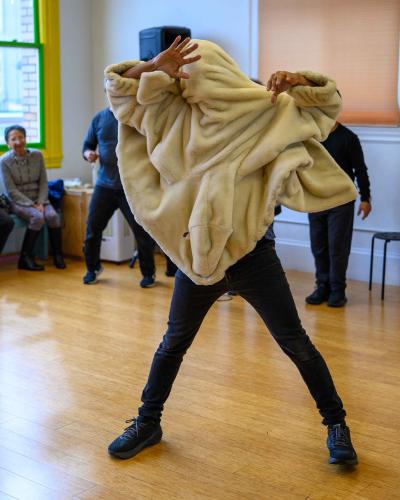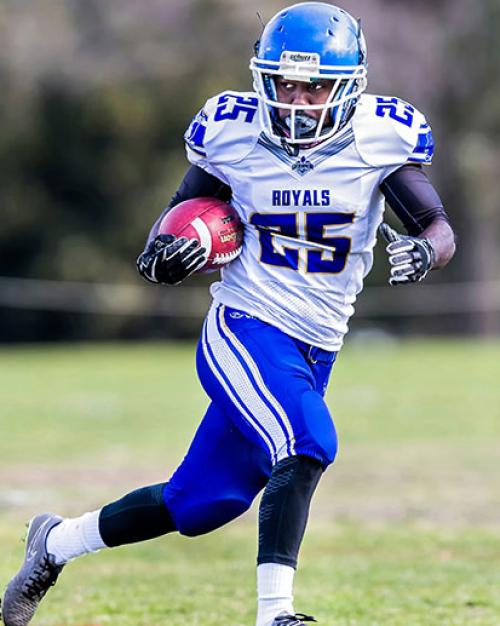Sports films, as a genre, are under-appreciated by cinema scholars, according to Samantha Sheppard, the Mary Armstrong Meduski ’80 Assistant Professor of Cinema and Media Studies in the College of Arts and Sciences.
“A lot of sports films are melodramatic,” she said. “They’re feel-good stories, they can be cheesy. Disney has brought us many great but also very fantastical sports films.”
Yet some sports films, both fictional and documentary, make important cultural statements, she argues in her book, “Sporting Blackness: Race, Embodiment, and Critical Muscle Memory on Screen.” In particular, she argues, Black bodies depicted on film have the power to transcend cliched, trite or even racist storylines.
“This project is deeply interested in thinking about embodiment and Black performativity in a genre we often disregard,” Sheppard said. “I wanted to understand how Black bodies on screen were able to negotiate the often-fraught ways they were represented by paying attention to not just the narratives but also the ways in which the body itself is able to contest dominant narratives and frames.”
In the book, Sheppard scrutinizes “the performative embodiment of blackness” in film – and in sports media and the general culture. She examines depictions of Black athletes in documentaries; feature-length dramas and comedies; short films and videos; television series; and music video – as well as images from real-life amateur and professional sports.
Repeated depictions of Black bodies in film echo the athletic concept of muscle memory, Sheppard said.
“The body, particularly the Black body, remembers. It recalls, it repeats,” Sheppard said. “And through that it’s able to log a history while improvising a new future.”
The book opens with an example from professional tennis: superstar Serena Williams.
“She has achieved her stellar and unparalleled athletic career without conforming to white sporting conventions,” Sheppard wrote. “Rather, she wins blackly, via a virtuosic Black body in all of its cornrowed, catsuited and Crip-walking glory.”
Similarly, Sheppard wrote, the Black body in film “thrown against the sharp white background of generic and social conventions that shape pervasive ideas of racial identity” can go beyond the limits of Hollywood sports films, which typically “recycle standard narratives about (white, male) athletic heroes whose hard work, self-sacrifice, and paternalistic coaches help them overcome obstacles to win the big game in the end.”
Although entertaining, Hollywood sports films including “Race” (Stephen Hopkins, 2016), about sprinter Jesse Owens, “The Blind Side” (John Lee Hancock, 2009) about football offensive tackle Michael Oher, and “Remember the Titans” (Boaz Yakin 2000), about a high school football team in 1970s Virginia, often constrain issues of race and racialization to the playing field, she wrote.
However, Sheppard said, the Black body transcends the limits of the sports film genre.
“Black sporting bodies can representationally and formally disrupt and protest their stereotypical depictions and conservative generic scripts,” she wrote. “The Black sporting body functions as an unruly historical force that exceeds the generic constraints within sports films’ idealized worlds to challenge not only the construction of social identities but also the historical narratives attached to those identities and the formal ways in which they are enacted on screen.”
In the book, Sheppard writes about the medal podium protest staged by Black U.S. sprinters Tommy Smith and John Carlos during the 1968 Summer Olympics. Since, other Black athletes, including NFL free agent quarterback Colin Kaepernick and the entire WNBA, have also protested issues that reach beyond the playing field, she said.
In 2020, a year when protests against systemic racism have arisen all over the U.S. and in other parts of the world, Sheppard said, “Sporting Blackness” communicates a longer historical trajectory.
“If this book had dropped last year, if this book had dropped next year,” she said, “we’d still be seeing the ways in which Black athletes are becoming more and more aware of their rarification and their exploitation, but also the ways in which they can fight back.”
Kate Blackwood is a writer for the College of Arts and Sciences.





